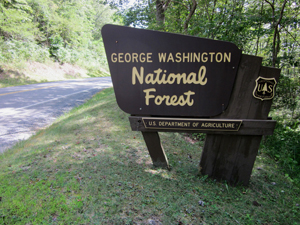FERC’s Draft Environmental Impact Statement for the Atlantic Coast Pipeline provides inaccurate, incomplete, and incorrect information about impacts on our core forested areas, streams, wildlife, and recreation as it cuts a 21-mile permanent swath over rugged mountains and valleys in our National Forests. The route crosses 26 native brook trout streams in the George Washington National Forest alone and passes through recovering Red Spruce forests in the Monongahela that support 240 rare species, many of which are in decline.
 The DEIS does not provide adequate information for a thorough, informed analysis of impacts that would serve as a sound basis for responsible decisions by the Forest Service.
The DEIS does not provide adequate information for a thorough, informed analysis of impacts that would serve as a sound basis for responsible decisions by the Forest Service.
DPMC has published a new story map that highlights major issues relating to our national forests and provides information for writing letters to FERC. Though general DEIS comments are due April 6, the deadline for comments related to our national forests is April 10, 2017.
Learn more about these critical topics:
- Amendment of GWNF and MNF forest plans to establish a new utility corridor and exempt the project from several FS standards
- Large scale excavation on high-hazard areas without detailed plans for prevention of erosion, alteration of runoff, and landslides
- Damage to water supplies and high-quality headwater streams, including native brook trout streams
- Fragmentation of high-integrity core forests that are home to many rare and sensitive species, causing loss of habitat that cannot be mitigated
- Crossing the Appalachian Trail corridor using a high-risk and environmentally damaging plan
- Degradation of scenic and recreational values in our national forests
